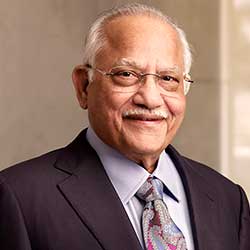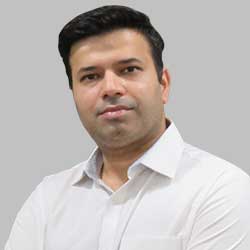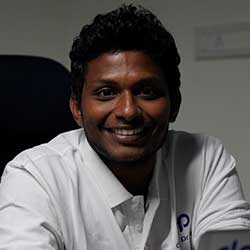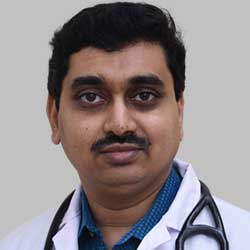Headlines of The Day
World Health Day
Every country’s economic well-being depends on a robust, efficient, and well-organized healthcare system. Even in resource-rich nations like the United States, a raging public health crisis that claims millions of lives in a matter of months strains the healthcare delivery system. One can easily imagine the stress and pressure that a worldwide pandemic would put on developing nations like India, which are already struggling to meet the day-to-day healthcare needs of their vast, underserved communities under the best of circumstances.
In a pandemic that is rapidly spreading, vigorous symptom screening, testing, isolation, and quarantining is the greatest way to flatten the curve and prevent additional individuals from becoming ill. The official numbers of confirmed cases and deaths are a crucial psychological factor in deciding the pandemic’s urgency and scope, as well as the government’s response. At the onset of the epidemic, India’s testing capabilities for Covid-19 was severely lacking, resulting in serious under-identification and under-reporting of Covid cases. Given the difficulties India has had in combating the epidemic over the previous two years, some physicians have expressed their thoughts on this World Health Day.

Dr Prathap C Reddy, Chairman, Apollo Hospitals Group
“The last year saw the country steadily building a bulwark against Covid with a robust vaccination program that led to a steady fall in the number of Covid cases. As we emerge from the shadow of Covid, it is imperative to bring the focus back on the pandemic of NCDs, a focus that faced a disruption impacting diagnosis and treatment for millions of patients. It is the only way we will succeed against the multiple challenges we face today with the pandemic, a polluted planet, and an increasing incidence of diseases that form the theme for World Health Day 2022 – Our Planet, Our Health.
“For a developing country like India, NCDs are a critical matter that need to be addressed. In India, NCDs kill 6 million people every year of which around 23% are between 30-70 years of age. An analysis of the data from 3.8 Lakh responses to the Covid Scanner shows the criticality of addressing the NCD challenge using all the tools at our disposal. The data indicates a national prevalence for diabetes mellitus of around 7%, over 8% for hypertension, and around 2% for COPD & asthma. Considering our population of 1.2 bn., these are huge numbers that will increase the burden of disease and impact productivity and economic growth. We must address the NCD challenge through promotion of healthy lifestyles, early diagnosis and management. We must approach Health as investment and not as an expenditure”

Aseem Garg, Founder & CEO of DCDC Kidney care
“Covid-19 has emerged as a global pandemic and has challenged the entire healthcare system. Dialysis Patients are ambiguous about getting infected, testing methods, preventive mechanisms, ponder on myths about the vaccination safety and manage commutation issues to hospital for routine dialysis during lockdown. Not only during pandemic but, due to accessibility and affordability constraints 70% of patients who start dialysis give up mid-way. If we want to see faster decreases in the number of patients being added to the pool of Chronic Kidney Disease, we must improve care quality, accessibility and affordability. The right to health, as well as the path to equity and dignity for the people of our country, is dependent on the quality of care provided. While we might have been able to achieve the quality, there’s still a long road to walk for accessibility and affordability. It is critical to provide health services that meet quality criteria in order to attain universal health coverage but it’s even more integral for them to be within your reach.”

Vijender Reddy Muthyala, Founder & CEO at DrinkPrime
Contaminated water can pose a serious health risk and it can affect not only you but all the members of your family. So, it’s extremely important to understand the dangers of not drinking clean water and act accordingly. So, how does contaminated water affect humans? Well, the immediate dangers of contaminated water can show up in the form of symptoms like nausea, diarrhoea and other types of gastrointestinal issues. These are usually indicators of diseases like typhoid, dysentery, cholera, viral hepatitis, etc. The long-term consequences, on the other hand, can be quite unpredictable as it can include serious issues like cancer, auto-immune diseases and even damage to the organs. However, these dangers are dependent on various factors like immunity levels, age and much more.
Contaminated water and its effects on human health
India faces a serious water quality issue with almost 37.7 million Indians being affected by waterborne diseases every year and close to 3 lakh children dying due to diarrhoea. The deterioration of the water quality in the country and the drastic increase in contaminated water can be attributed to the ever-growing problem of water pollution. Not only is 70% of surface water in India unfit for consumption but the groundwater sources are gradually diminishing as well. Now, all these contaminants may not be man-made, there can be naturally occurring contaminants like arsenic in the lining of a groundwater source. Similarly, arsenic contamination in the states of West Bengal, Jharkhand, Bihar, Uttar Pradesh, Assam, Manipur, and Chhattisgarh is way above the permissible limit.
Type of contaminants in water and their effect on human healthContaminants can enter your drinking water through various means. The most common ways include contaminated groundwater sources, broken pipes, and water run-offs during rain.
Physical
Physical contaminants refer to the soil, mud, silt, and any kind of large particulate matter that’s present in water. While physical contaminants like sand pose negligible health risks, they are breeding grounds for microbes, parasites and other harmful organisms.
Chemical
Chemical contaminants refer to compounds like chlorine, arsenic and many more in water that can either be present naturally or due to human activities. While these chemical compounds won’t do much in trace amounts, they significantly can impact your health in large amounts. Chlorine, for example, can cause cell mutations and mess with the DNA, resulting in auto-immune diseases. Arsenic, on the other hand, can cause cancer of the bladder, kidney, skin and even lungs.
Biological
Biological contaminants refer to all sorts of microbial, parasitic, and any other living organisms in the water. The most common biological contaminants are bacteria, protozoa and viruses. These pathogens often cause waterborne diseases like cholera, diarrhoeal diseases, viral hepatitis and typhoid. Moreover, these diseases contribute to the most waterborne related deaths, with diarrhoeal diseases being the worst, followed by viral hepatitis.
Have you consumed contaminated water? Here are some diseases/symptoms you need to watch out for!
As mentioned earlier, contaminated water can cause a ton of ailments. However, these diseases first show up as symptoms. It’s when you start seeing these symptoms, that you should consider visiting a doctor. We recommend you head to the hospital as soon as you start seeing the symptom as it could potentially save your life. It’s important to understand that these symptoms do show up immediately. There can be differences within the same family. The timeline of these diseases is affected by numerous factors like immunity, age, physical condition and much more. So, while a child in the same house may fall ill after consuming one glass of contaminated water, an adult might not even show symptoms due to their elevated immunity. Here are some of the most commonly reported problems people experience from drinking contaminated water:
- Vomiting and Nausea
- Diarrhoea
- Gastrointestinal Problems
- Intestinal or Stomach Cramps
- Intestinal or Stomach Pain
- Dehydration
Of course, depending on the type of impurity, these symptoms may be different. Also, you may be asymptomatic. As mentioned earlier, some contaminants may cause long term illnesses like auto-immune diseases and cancer. So, regular health checkups become necessary. However, the best solution is always prevention. So, you should ideally get your water tested and determine if it’s safe for consumption.
What is safe drinking water?
The World Health Organisation (2017) defines safe drinking water as water that does not pose any health risk when consumed over a period of time. This water can be from various improved water sources like household connections, public pipes, borewells, surface water like lakes and much more. Safe drinking water or potable water should essentially appear clear to the eye and be free of any odours, tastes and colours. Additionally, it should be free of toxins, pathogens, carcinogens, dissolved inorganic/organic compounds, and much more. Unfortunately, while some impurities may appear to the naked eye, some may be invisible. This is why it’s best to test the water for these impurities.
How can I tell if my water is safe?
Are you wondering how to test the quality of water in your home?
Well, there are various methods to test your drinking water for contaminants. Purchase a TDS (Total Dissolved Solids) meter and test the TDS level of the water at home. Pro tip: The TDS levels will range from 100 to 2000 parts per million (PPM). But your drinking water TDS level should range between 50 to 150 PPM.
Here’s something else you can do – Buy DIY (do it yourself) kits online. You can test your drinking water for different impurities.
But it’s always best to reach out to professionals. Labs are the most reliable as they give you a detailed report and even recommend what you can do to solve the issue. Unfortunately, these services can be expensive, and you should only resort to them if your water source shows extreme characteristic changes like slimy texture, odour or even colours. Here’s another option for you. You can reach out to water purifier brands that actually test the water quality before installing the device. These companies have significant expertise in determining water quality, and their technician can even show you the results in real-time. Now that you have three options to determine the water quality of your home, you can choose the most suitable one based on your preference and convenience.

Dr Sandeep Patil, Chief Intensivist, Fortis Hospital
Often used interchangeably, health and wellness mean very different things. The main difference between health and wellness is that health is the final goal, while wellness is the way to achieve it. Health refers to a state where the human body is free from disease and pain. Wellness, on the other hand, includes achieving a balance in physical, social, spiritual, emotional, intellectual, and occupational well-being.
In historical times, health, or the absence of disease, was closely associated with religion, and they believed that supernatural powers must be appeased to achieve good health. Hippocrates, considered the father of modern medicine, is known for breaking this belief system, as he promoted the approach that health requires proper balance in the human body. His broad concept of health is the foundation of functional medicine, which looks at the concept of health from a holistic perspective. As WHO says, ‘health is a state of complete physical, mental, and social well-being and not merely the absence of disease or infirmity’.
While many people may consider health to be more important than wellness and vice-versa, the fact is that they are both essential, and it is only together that a person can be truly healthy and fulfilled. Let us talk about the importance of physical health in terms of both health and wellness.
Physical health and its importance: Taking care of physical health is very important for your overall health and wellness. It has been proven that exercise is good for your physical and mental health. The two main areas of attention here are eating a good healthy diet and getting sufficient physical movement/exercise. While planning your diet, make sure you add fermented foods rich in pre & probiotics, vegetables, & fruits, healthy fats, including Omega-3 Fatty Acids and polyunsaturated fats, good protein (it can be plant or animal-based) with limited red meat consumption, whole grains and complex carbohydrates to your meals.
Besides health benefits, a balanced diet with minimally processed food will prevent chronic diseases like type 2 Diabetes, Obesity, and cardiac problems. It also fosters a flourishing gut microbiome (critical for immunity and mental health). The gut-brain connection is vital for your emotional and mental well-being as 90% of the Serotonin (the feel-good hormone) is made in the gut. The meals you consume impact your wellness and health, so make sure you eat right!
Regular exercise is essential for improving balance, building lean muscles, improving cardiovascular functions, and boosting mood and energy. If you have been ignoring your physical health for a long time, it is essential to start small and do it for the long term rather than doing intensive workouts for a short time. Start with small activities like walking in the park, standing more while working at your computer, parking further to walk more, taking the stairs instead of the elevator, etc.
Mental wellness and its importance: Mental health and wellness are critical for a happy life. That is why it is essential to incorporate habits into our daily lives that help us achieve good mental health in a sustained yet adaptable manner. Some tips to achieve mental wellbeing include the following:
- Practice regular self-care – Whether it is sleeping for an extra hour, staying hydrated through the day, staying at home rather than going out, or simply taking a long shower, self-care is different for a person. Any activity that makes you feel renewed and energized can be defined as a self-care activity. These small acts are essential because it is only when you take care of yourself that you can care of people who matter to you
- Have a good sleep routine – Sleep is an essential biological function, having disrupted patterns can affect your mental and physical health. It can impact your blood sugar, cause hormonal imbalances, influence mood, and impair decision-making skills. Have a fixed regime for sleeping and waking up, and don’t forget to switch off your phone an hour before bed
- Seek help – Mental health can be complicated and affects different people differently. It is essential to seek professional help from a therapist, Psychiatrist, or Psychologist (depending on your symptoms) if you feel anxious and stressed for long periods. While stress and Anxiety for short durations happen to everyone, it is time to seek help if you think they interfere with your everyday routine and relationships. Remember, the earlier you seek help, the better the outcomes will be, because it will give you a better chance to repair your mental health before it worsens
Another area to consider is occupational wellness. This is related to a person’s job or career. Many people dislike their jobs and tend to do them only for the paycheck, which can wreck their overall well-being! The stress and anxiety of being in a position/ role/ job that you do not like can result in physical and emotional symptoms – so make sure you discuss this with an expert, especially if you feel that work stresses you a lot & is interfering in your personal relationships and outside hours.
In conclusion, understanding the difference between health and wellness is key to living a fulfilled life. So, while the status of your health cannot always be changed, there is always an opportunity to take an active and positive approach to wellness and that begins by cultivating good habits around diet, exercise, mental health & sleep patterns.

Himesh Joshi, Co-Founder and CEO, Ayu Health Hospitals
“The pandemic has highlighted the need for better healthcare infrastructure and digitization of healthcare services. In the last two years, we’ve witnessed major improvements on these fronts but there’s still a long way to go. In many places, we still see healthcare workers who rely primarily on traditional practices such as using pen-paper to make health data records of patients. Apart from this, the healthcare industry is far behind in terms of patient centricity and friendliness. This calls for a careful restructuring of our medical environment to make it more focused on customer experience and digitization. As a responsible healthcare player we have been trying to fill this gap in the healthcare system over the last couple of years.”

Dr Dipu TS, Associate Professor, Division of Infectious Diseases, Amrita Hospital, Kochi
“During the first wave of the pandemic, beds, intensive care units, ventilators, oxygen, and life-saving drugs were in short supply across the country. The government attempted to address the problem by acquiring 60,000 ventilators, with around 17,000 being delivered to states across the country. Patients who need a ventilator or other life-saving devices from Covid were unable to receive them due to a shortage of healthcare personnel, which included critical care experts, nurses, and paramedics such as respiratory therapists. This demonstrates the country’s inability to deal with a pandemic of this magnitude, not only in terms of medical infrastructure, but also in terms of managing trained human resource and in maintaining a seamless supply chain.”
This demonstrates the increased demand for rapid conversion of scientific research findings into market-ready solutions. It also emphasises the critical function of government agencies such as DBT-BIRAC in strengthening the healthcare industry by assessing the commercialization of in-house medical research products.
Applauding government’s quick action plans Dr Dipu TS added further, “the setting up of Indian SARS-CoV-2 Genomics Consortium (INSACOG) labs was a good initiative from the Government to sequence the gene and understand the newer variants of concern on a real-time basis to alert the system for appropriate measures. The vaccinating India campaign and its execution was tremendous, considering the billions of populations it has covered.”
- Moving to a world where people can live freely without the scare of any virus killing them or their loved ones, Dr Dipu TS, lists down his suggestions to make India pandemic ready:
- Awareness and correct information flow to the people, via having a national database for people/media or the experts could refer too
- Healthcare infrastructure strengthening by investing in both public and private sector
- India needs more skilled doctors, nurses, and paramedic’s staff who are cross trained to deploy in the situations of need
- Better management and plan to maintain the supply chain of medicines, materials and equipment’s and a contingency plan
- Strengthening of Telemedicine services and other digital health services
- Leadership training and strategic planning for managing future disasters
- More clinics and healthcare institutions have to embrace the model of public- private partnership
- Better home care services can lessen the burden on healthcare system
- Covid vaccination drive should continue until we have 100% penetrance and coverage for which we need to address the vaccine hesitancy in the community and take collective and corrective measures
- Continue the surveillance activities to recognise newer variants and regional outbreaks so as to activate the preventive public health measures in a timely manner.
A pandemic is not only a public health crisis, but also an economic crisis for majority of the population, as jobs and other opportunities to earn a living are severely affected. To support the citizens during times like this, various financial models have to be explored that expedite insurance reimbursements so as to cover healthcare expenses of people along with the subsidies for industries in general and individuals in particular.
MB Bureau












